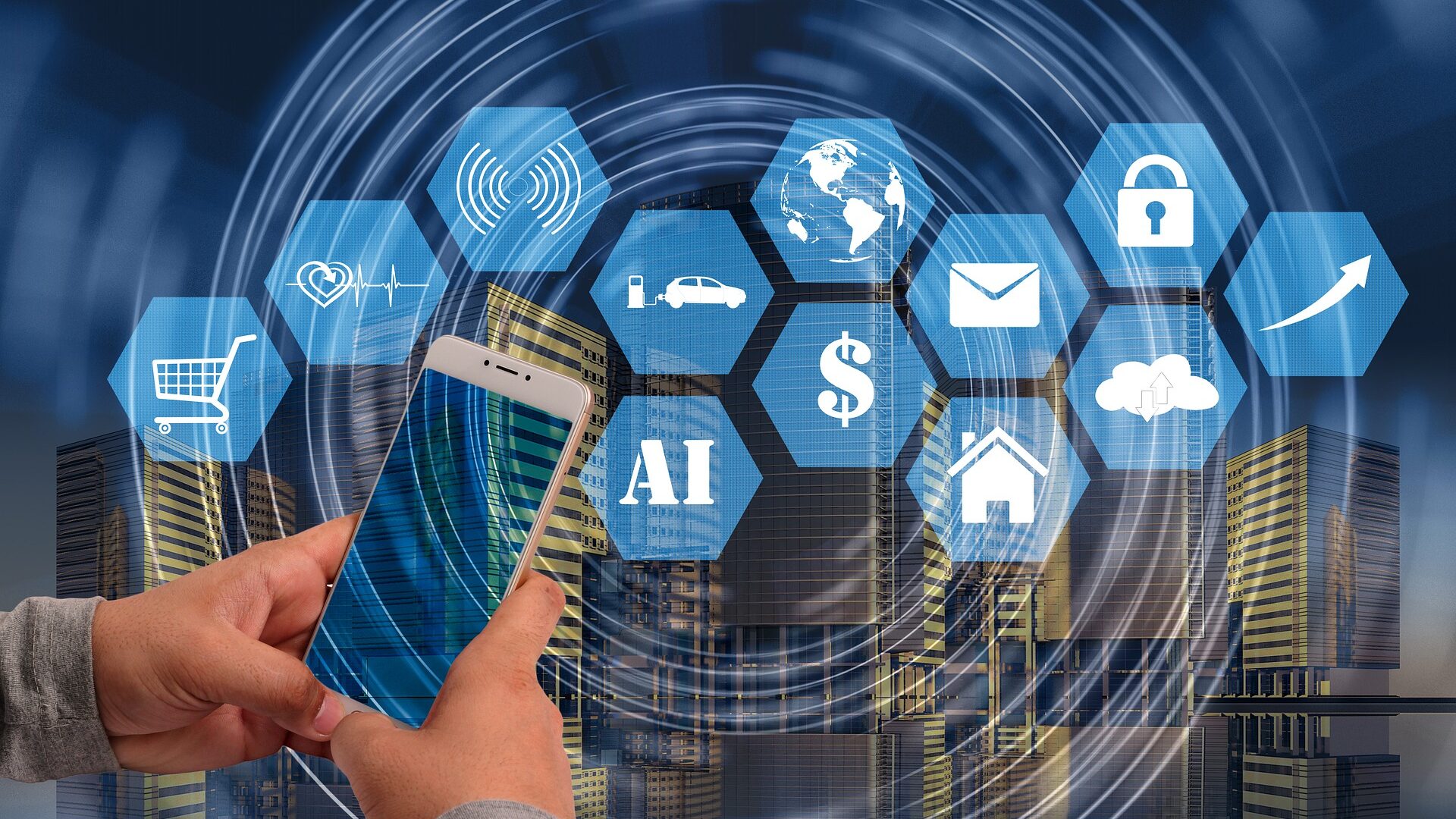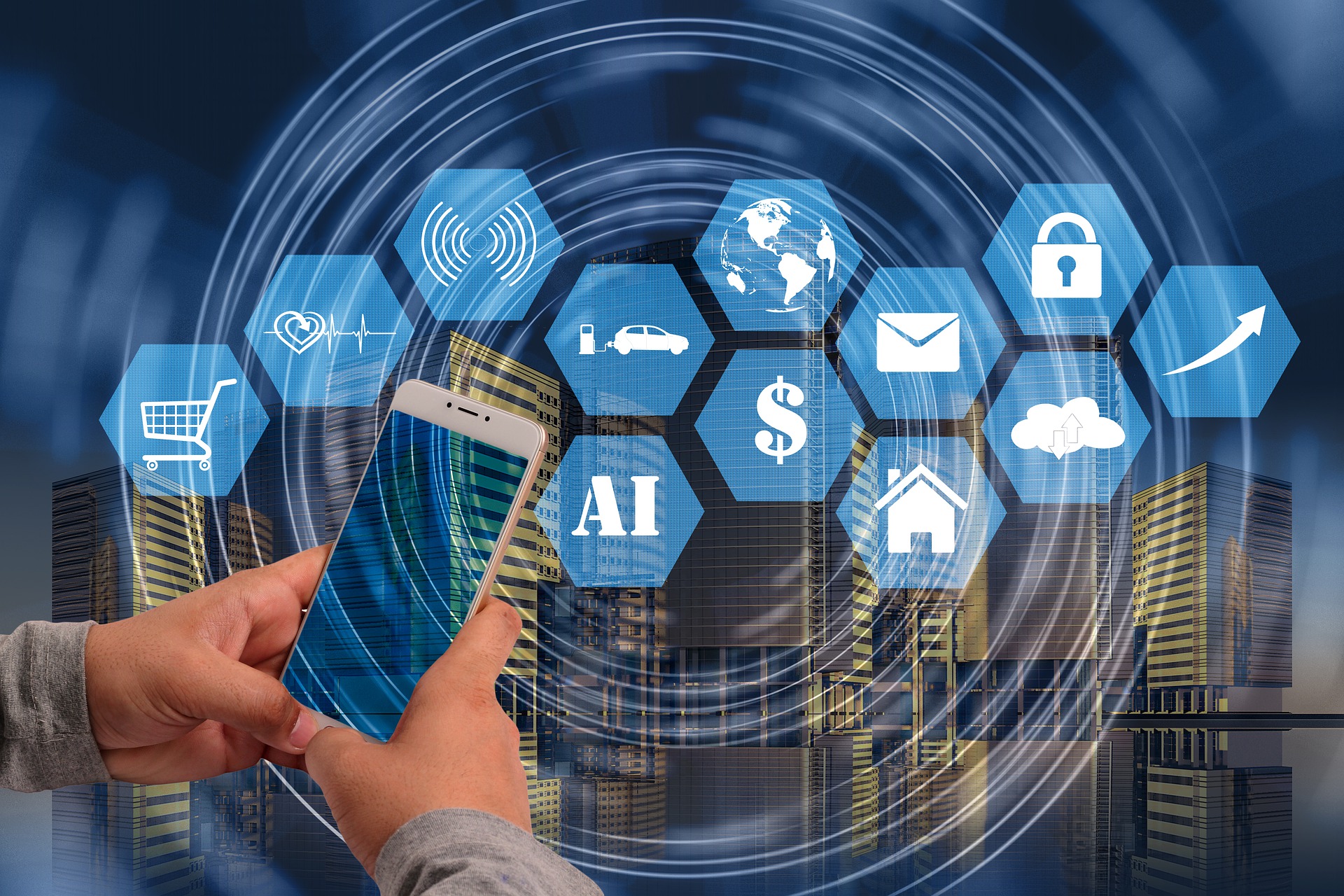Digital transformation isn’t about adding technology for the sake of novelty. It’s about rethinking business models and using digital tools to unlock new levels of profitability, operational efficiency, and customer experience. The benefits of digital transformation ripple across the entire retail industry, from improved workflows to stronger customer relationships.
So where should retailers focus next? What new technologies are shaping customer behavior? And how do you balance innovation with practical implementation?
Here are the key trends transforming the retail sector right now and what they could mean for your digital transformation strategy.
Immersive Virtual Storefronts
E-commerce has moved beyond static websites. Retailers are now designing fully interactive spaces that feel more like flagships than digital catalogs. Immersive virtual storefronts blend the familiarity of physical stores with the flexibility of online shopping, 3D modeling, virtual reality, and other advanced digital technologies to shape how people browse, explore, and buy.
Picture a shopper navigating a digital boutique: clicking on a shelf to open detailed product views, trying on clothing in a virtual fitting room, watching product demos, adding items to a cart with a gesture. These features reflect the kind of customer interactions people expect from top-tier brands—except now, they happen in a virtual space designed to feel personal and fluid.
Brands such as Charlotte Tilbury and IKEA have led the way, using 3D visualization to build immersive storefronts that drive customer engagement and deliver a consistent brand experience across channels. They’re all part of broader omnichannel retail strategies built to meet shoppers wherever they are.
When they’re well designed, these retail technology environments make it easier for shoppers to find what they’re looking for and more likely to feel confident in what they’re buying. They also help retailers streamline operations behind the scenes and connect with customers in ways that feel more personal and relevant.
AI-Powered Merchandising
Artificial intelligence is now a driving force behind smarter, faster, and more adaptive retail merchandising. The old model of set-it-and-forget-it merchandising doesn’t cut it anymore. Today’s AI-powered tools can analyze real-time data to optimize product placement, adjust pricing, and align inventory levels with actual demand both online and in-store.
Say there’s a spike in searches for outdoor furniture on your e-commerce platform. With AI, a retailer could automatically reposition those products to premium placement zones in their 3D environment, update pricing based on demand, and trigger reorders before stock runs low.
AI also connects the dots between physical and digital channels. Insights gathered from in-store execution can influence digital shelf displays, while online browsing behavior can inform planograms for physical stores. Whether you’re updating an endcap or launching a promotional display across 500 locations, AI helps you make decisions based on actual shopper behavior, not assumptions.
These tools are also transforming inventory management by aligning stock levels with actual demand in real time, helping avoid overstock and out-of-stocks while improving overall retail operations.
Personalization at Scale
Today’s shoppers expect relevance. Personalization isn’t just about adding their name to an email; it’s about tailoring product recommendations, content, promotions, and store layouts based on who shoppers are and what they need in real time.
Thanks to machine learning, big data, and automation, retailers can now deliver this kind of relevance across every touchpoint in the customer journey—whether in-store, online, or through personalized email campaigns. Based on past purchases, one shopper might see a homepage curated with skincare bundles and tutorials. Another might be greeted with back-to-school essentials or trending local products based on their location.
Real-time personalization is now a core part of omnichannel retail. When done right, it can transform how customers connect with your brand over time. The more consistently you can deliver a tailored experience, the more customers begin to expect it from every interaction—and the less likely they’ll be to shop with competitors that don’t provide it.
This level of customization not only strengthens consumer behavior insights but also fuels smarter marketing strategies that resonate with the right shoppers at the right time.
Augmented Reality
AR is becoming an essential part of the online shopping experience. Shoppers want to see how a new lamp looks in their living room or whether a lipstick shade suits their skin tone before making a decision. In visually driven categories such as home goods, fashion, and cosmetics, AR helps bridge the gap between inspiration and confidence.
Beyond offering interactivity that encourages engagement, room visualization tools and virtual try-ons reduce returns and align with rising consumer expectations for smarter, more helpful online shopping. And AR isn’t limited to the web: In physical stores, shoppers can scan tags or packaging to access reviews, videos, and product comparisons, creating a seamless integration between online and in-store environments.
By making product information more accessible and enhancing customer engagement, AR tools build trust, particularly in high-consideration categories. As AR technology becomes easier to deploy and integrate, it can serve as a practical tool for turning interest into action.
Predictive and Prescriptive Analytics
Predictive analytics has long helped retailers anticipate customer needs. As part of a broader data analytics strategy, the game-changer now is prescriptive analytics. Instead of simply forecasting what might happen, this process uses AI to recommend specific actions based on real-time conditions.
Let’s say foot traffic is rising in one location but falling in another. A prescriptive system could recommend staffing adjustments, promotional offers, or price changes to optimize conversion opportunities at each store. For example, it might suggest delaying a markdown in a region where a product is still selling at full price while discounting it elsewhere.
Prescriptive analytics can also help retailers refine their purchasing decisions. By incorporating competitor data, local demand, and past sales, it ensures that product assortments are better matched to customer behavior.
This kind of real-time, data-driven decision-making helps reduce waste, cut costs, and improve both online and in-store execution. For retailers managing complex operations, it’s a must-have.
When integrated into your retail digital transformation roadmap, these tools enable more accurate demand forecasting, empowering faster, smarter decisions across the entire retail business.
Connected Checkout and Contactless Payments
In retail, checkout is the final impression. And a clunky or slow checkout can undo all the goodwill preceding it. That’s why more retailers are rethinking how they handle payments, both online and in store.
From digital wallets and biometric authentication to scan-and-go mobile checkout, today’s best retail technology simplifies the checkout process without sacrificing security. These payment innovations streamline the shopping experience, improving overall customer satisfaction.
Connected checkout does more than speed things up. It’s also a valuable source of insight. When paired with loyalty programs or CRM systems, checkout data can power more personalized follow-ups, smarter marketing campaigns, and tighter feedback loops across the customer journey.
Retailers who modernize their POS systems are unlocking new levels of digitalization, improving back-end efficiency, and reinforcing trust in every purchase interaction.
Sustainability Tech
Sustainability has shifted from a niche concern to a core component of retail strategy. And now technology is enabling retailers to meet environmental goals while improving their bottom line.
Take digital twins.
A digital twin is a virtual replica of your store created using 3D visualization and layered with real customer data. It allows teams to experiment with everything from planograms and endcap displays to signage, lighting, and shopper flow. You can simulate a 3D environment across a single store or an entire fleet, with zero disruption to your physical operations.
Retailers can simulate store layouts, shipping logistics, or manufacturing processes in a virtual space to identify inefficiencies before they cause waste. These models help reduce emissions, conserve energy, and optimize resource use across multiple layers of retail operations, all without the cost of physical testing.
Tools such as carbon tracking dashboards and blockchain-based supply chain systems make it easier to verify product origins and share that data with consumers. Customers want transparency. They want to know where their items come from, how they’re made, and how their choices impact the planet. Retailers who can answer those questions clearly earn trust and loyalty.
Other technologies, like AI-powered delivery routing and IoT-connected energy systems, help reduce the footprint of everyday operations. Even 3D visualization plays a role: Testing packaging or display materials in a virtual environment can lead to more sustainable decisions.
Incorporating sustainability-focused initiatives also enhances the overall customer experience, as shoppers increasingly seek out brands aligned with their values.
Digital Twin Environments for Testing and Validation
Trends can inspire innovation, but chasing them blindly is risky. What works for one retailer won’t necessarily translate to another. That’s why testing and validation are essential parts of any digital transformation strategy. And increasingly, the smartest way to do that is through digital twin environments.
Want to test a back-to-school display before it goes live? Reimagine your store layout to reflect how customers actually move through the space? Evaluate how new product bundles perform across regions? A digital twin makes it all possible—quickly, safely, and cost-effectively.
At InContext, this kind of virtual space is at the heart of what we do. Our platform helps retailers build, iterate, and validate concepts with precision so that you’re neither relying on assumptions and gut instinct nor copying competitors. You’re making data-backed decisions that lead to smarter merchandising, better in-store execution, and faster paths to ROI.
In today’s market, guessing isn’t enough. If you want results, you have to test, and digital twins give you the perfect means to do it.
Looking Ahead
These digital transformation trends aren’t happening in silos. They’re interconnected. Personalized experiences depend on AI. AR integrations require data from mobile apps and e-commerce platforms. Predictive analytics relies on clean, organized customer data. Sustainability goals often demand new technologies.
The future of retail business is about being smarter, faster, and more customer-focused across every channel—connecting touchpoints and data sources to drive lasting value. At InContext, we help retailers stay ahead of the curve by turning emerging technologies into real-world results. Whether you’re experimenting with immersive environments or implementing AI-driven merchandising, our solutions help you test, optimize, and scale with confidence.
Want to see how these advancements can work in your stores? Let’s talk.





